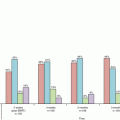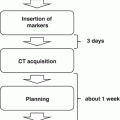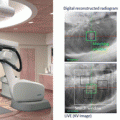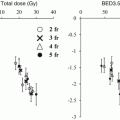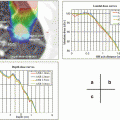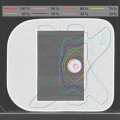© Springer Japan 2015
Yasushi Nagata (ed.)Stereotactic Body Radiation Therapy10.1007/978-4-431-54883-6_1111. Japanese Experiences
(1)
Department of Radiation Oncology, Kobe City Medical Center General Hospital, 2-1-1, Minatojima-Minamimachi, Chuo, Kobe 650-0047, Japan
(2)
Department of Radiation Oncology, Hiroshima University Hospital, Hiroshima, Japan
(3)
Department of Radiation Medicine, Hokkaido University Graduate School of Medicine, Sapporo, Japan
(4)
Department of Radiation Oncology and Image-Applied Therapy, Graduate School of Medicine, Kyoto University, Kyoto, Japan
Keywords
Stereotactic body radiation therapySBRTJapan Clinical Oncology GroupJCOG0403JCOG070211.1 Retrospective Outcome Reports of SBRT in Japan
Dr. Uematsu of National Defense Medical College in Japan, who is the pioneer of the Stereotactic Body Radiation Therapy (SBRT) for lung cancer, realized for the first time the accelerator combined with CT system (named with FOCAL unit) in the treatment room where the couch of the accelerator links that of the CT. By using this system, 50 patients with pathologically proven T1 or T2 N0 lung cancer, who were either medically inoperable or refused surgery, were treated between October 1994 and June 1999. In most patients the dose was 50–60 Gy in five to ten fractions for 1–2 weeks only to the primary lesion. Beam arrangements consisted of 6–15 noncoplanar arcs. With a median follow-up period of 36 months, the 3-year overall survival rate and the 3-year local control rate was 66 % and 94 %, respectively [1].
Onimari et al. reported the results of phase I/II SBRT consisted of 48–60 Gy in eight fractions over 2 weeks. They treated 57 lung tumors. The 3-year local control rate was 80 % with a median follow-up period of 17 months for survivors. The 3-year local control rate was 70 % for patients who received 48 Gy and 100 % for patients who received 60 Gy. One patient with a central lesion died of a radiation-induced ulcer in the esophagus after receiving 48 Gy in eight fractions at isocenter. Although the contour of esophagus received 80 % or less of the prescribed dose in the planning, recontouring of esophagus in retrospective review revealed that one cc of esophagus might have received 42.5 Gy, with the maximum dose of 50.5 Gy [2].
Dr. Nagata of Kyoto University Graduate School in Medicine increased a single dose up to 12 Gy at the isocenter and reduced fraction to four times. Nagata and his colleague treated 45 patients between September 1998 and February 2004. Thirty-two patients had T1 lung cancer, and the other 13 had T2 lung cancer. Nagata et al. reported 16 % tumors completely disappeared after treatment. During a median follow-up of 30 months, no pulmonary complications greater than grade 3 of National Cancer Institute-Common Toxicity Criteria were noted. The 3-year local control rate was 98 %. The 3-year overall survival rate for T1 lung tumor was 83 % and that for T2 tumor was 72 % [3].
Koto et al. treated 19 patients with T1 lung tumor and 12 patients with T2 with 45 Gy at isocenter in three fractions. The median duration of observation for all patients was 32 months. The 3-year local control rates of T1 and T2 tumors were 77.9 % and 40.0 %, respectively. They stated that a more intensive treatment regimen should be considered for T2 tumors [4].
The largest series of SBRT for early-stage non-small lung cancer was reported by Dr. Onishi of Yamanashi University who went to the national questionnaire. One hundred and sixty-four patients with T1 lung cancer and 93 patients with T2 were treated with SBRT using a variety of techniques, all noncoplanar arcs or multiple static beams and mechanisms to reduce respiratory movement. Total dose of 18–75 Gy in one to 22 fractions were delivered. The median calculated biologic effective dose (BED) was 111 Gy (range, 57–180 Gy) based on alpha/beta = 10. The median age was 76 years old. During a median follow-up of 38 months, pulmonary complications greater than grade 2 of National Cancer Institute-Common Toxicity Criteria were noted in only 5.4 % of patients. In SBRT, local progression occurred in 36 patients (14.0 %), and the local recurrence rate was 8.4 % for a BED of 100 Gy or more compared with 42.9 % for less than 100 Gy (p < 0.001). The 5-year overall survival rate of medically operable patients was 70.8 % among those treated with a BED of 100 Gy or more compared with 30.2 % among those treated with less than 100 Gy (p < 0.05), and that of inoperable cases was 39 % with a BED of 100 Gy or more [5].
Nagata et al. reported the survey for the status of SBRT in Japan using the nationwide questionnaire. At the end of November 2005, 94 institutions responded to the questionnaire. A total of 1,111 patients with histologically confirmed lung cancer were treated, including 637 had T1N0M0 and 272 had T2N0M0 lung cancer. The most frequent schedule used for primary lung cancer was 48 Gy in four fractions, followed by 50 Gy in five fractions. There were 14 (0.6 % of all cases) reported grade 5 complications: 11 cases of radiation pneumonitis, 2 cases of hemoptysis, and 1 case of radiation esophagitis [6].
11.2 Prospective Clinical Trials of SBRT Conducted by Japan Clinical Oncology Group
11.2.1 JCOG 0403
In 2003, Radiation Therapy Study Group has been newly installed in Japan Clinical Oncology Group; JCOG. Principal investigator was Professor Hiraoka of Department of Radiation Oncology and Image-applied Medicine, Kyoto University Graduate School of Medicine. For the first clinical examination of this study group, the phase II study regarding SBRT for Stage IA non-small cell lung cancer, JCOG0403, was initiated.
The purpose of JCOG0403 was to evaluate the safety and efficacy of SBRT, consist of 48 Gy at isocenter in four fractions over 4–8 days, in both patients with operable and inoperable Stage IA non-small cell lung cancer. Answers to the following two clinical questions were sought by this trial: First; Can SBRT be an alternative standard treatment modality for inoperable patients? Second; Is SBRT promising as an alternative to lobectomy for operable patients received lobectomy for standard care? This study is different from Western study. Not only inoperable cases but operable cases were included in this study. The primary endpoint is the 3-year overall survival rate. The patients with histologically or cytologically proven stage IA non-small cell lung cancer, PS 0–2, PaO2 ≥ 60 torr, FEV1.0 ≥ 700 mL were included, Between July 2004 and November 2008, 169 patients from 15 institutions participated in the clinical trials were enrolled in this JCOG0403. One hundred inoperable and 64 operable in total 164 patients were eligible.
Stay updated, free articles. Join our Telegram channel

Full access? Get Clinical Tree


